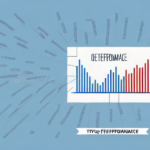Understanding the Impact of Harbor Maintenance Fee on Supply Chain Management
The Harbor Maintenance Fee (HMF) is a charge imposed by the United States government on imports and exports traversing its ports, designed to fund harbor maintenance and improvements. This article delves into the HMF's influence on supply chain management, examining its history, effects on shipping costs and pricing, and the broader political and economic ramifications. Additionally, we explore strategies to mitigate its impact, legal challenges, and alternative funding models.
What is the Harbor Maintenance Fee and How Does It Work?
The Harbor Maintenance Fee (HMF) is levied on imports and exports in the United States to support harbor maintenance, dredging, and necessary infrastructure improvements. The fee is set at 0.125% of the cargo's value and is paid by importers or exporters for every shipment entering or leaving the country. Revenue from the HMF is directed to the Harbor Maintenance Trust Fund (HMTF), managed by the Army Corps of Engineers, which finances routine and capital improvement projects at commercial ports nationwide.
Established in 1986 under the Water Resources Development Act, the HMF aimed to ensure U.S. ports and harbors could meet the demands of a growing shipping industry. However, the fee has sparked debate: critics argue it burdens importers and exporters excessively, while proponents assert it's essential for maintaining the global competitiveness of U.S. maritime infrastructure.
Recent years have seen attempts to reform the HMF, including proposals to adjust the fee rate or allocate more funds to specific ports or regions. These initiatives often face opposition from stakeholders concerned about potential adverse effects on trade and the broader economy.
History and Evolution of the Harbor Maintenance Fee
The HMF was introduced as part of the Water Resources Development Act (WRDA) of 1986, intended to fund harbor maintenance projects. Initially, the HMTF struggled with underutilization, amassing a surplus exceeding $6 billion by 2010. This surplus led to criticisms that the HMF was diverted to general government revenues instead of its designated purpose.
To address this, the Moving Ahead for Progress in the 21st Century Act (MAP-21) of 2012 mandated that HMF revenues be exclusively used for harbor maintenance. It also introduced spending targets, requiring that annual expenditures match revenue receipts, thereby preventing the accumulation of excessive funds.
Under MAP-21, funding for harbor maintenance surged, reaching a record $1.6 billion in 2019. This increase facilitated crucial repairs and enhancements across U.S. ports. Nonetheless, debates continue regarding the equitable distribution of HMF funds, with some advocating for a more balanced funding model to alleviate the disproportionate financial burden on certain industries.
The Role of the Harbor Maintenance Trust Fund in Supply Chain Management
The Harbor Maintenance Trust Fund (HMTF) is pivotal in supply chain management by ensuring adequate funding for harbor maintenance and infrastructure improvements. Well-maintained commercial ports are essential for efficient global trade, serving as critical junctions between shippers and consumers. By sustaining port infrastructure, the HMTF supports the seamless flow of goods, enhancing overall supply chain efficiency.
Moreover, the HMTF contributes to environmental sustainability within the shipping industry. Funding projects aimed at reducing emissions and improving water quality helps mitigate the environmental footprint of maritime activities, promoting a more sustainable and resilient supply chain. This dual focus on infrastructure and sustainability not only benefits the environment but also safeguards the long-term viability of the shipping sector.
How the Harbor Maintenance Fee Affects Shipping Costs and Pricing
The HMF directly influences shipping costs and pricing structures. Importers and exporters typically incorporate the HMF into their shipping rates, which can lead to increased prices for goods. This cost escalation may reduce the competitiveness of certain products in the global market. Additionally, the HMF can incentivize shippers to bypass higher-fee ports in favor of more cost-effective alternatives, potentially altering shipping routes and logistics strategies.
It's important to recognize that the HMF is not a static fee—it varies based on vessel size, type, and port of entry. This variability can complicate budgeting and financial planning for shippers, presenting challenges in cost prediction and management. Industry experts advocate for greater transparency and standardization in HMF application to alleviate these uncertainties.
Impact of the Harbor Maintenance Fee on Cargo Volumes and Shipping Routes
The HMF can significantly influence cargo volumes and the selection of shipping routes. High fees at specific ports may deter shippers from using those facilities, leading to reduced cargo throughput and revenue declines for impacted ports. Conversely, ports with lower HMFs might experience increased traffic, altering regional economic dynamics.
Moreover, the fee structure can affect the nature of goods transported through various ports. Shippers may prefer to direct lower-value or lighter cargo through ports with higher fees to offset costs, while reserving costlier or bulkier shipments for ports with more favorable fee structures. This behavior can shift supply chain patterns, impacting local economies and specialized industries reliant on certain ports.
The Political and Economic Implications of the Harbor Maintenance Fee
The HMF carries both political and economic weight. Politically, it serves as a revenue source for the federal government, funding not only harbor maintenance but potentially other programs. This dual role has sparked controversy, with some stakeholders criticizing the allocation of HMF funds beyond their intended purpose. Economically, the HMF's impact is twofold: it provides necessary funding for infrastructure improvements, enhancing supply chain efficiency, but it also raises shipping costs, potentially decreasing the competitiveness of U.S. goods internationally.
Internationally, the HMF may influence trade relations. Countries might perceive the fee as a barrier, leading to retaliatory measures such as additional tariffs or fees. This could escalate into trade tensions, adversely affecting global economic stability. On the other hand, some argue that the HMF ensures equitable contribution from all trading partners toward maintaining shared infrastructure, fostering fair competition.
Regionally, the HMF can have varied economic effects. Ports with heavy import activities might suffer reduced volume and associated economic downturns if fees make imports cost-prohibitive. In contrast, export-focused ports could benefit from improved infrastructure and increased efficiency, enhancing their competitive edge in international markets.
Strategies for Mitigating the Effects of the Harbor Maintenance Fee on Supply Chain Management
To counteract the financial impact of the HMF, businesses can employ several strategies:
- Negotiating Shipping Rates: Engage with carriers to secure more favorable rates, potentially offsetting HMF costs.
- Leveraging Technology: Implement advanced supply chain technologies to streamline operations, reduce costs, and minimize the fee's impact.
- Alternative Routes and Ports: Utilize less expensive or more efficient ports and shipping routes to avoid higher fees.
- Shipment Consolidation: Combine shipments to decrease the number of fees incurred, achievable through collaboration with other shippers or third-party logistics providers.
- Cost Pass-Through: Carefully consider passing the HMF costs to customers via price adjustments, while monitoring potential impacts on demand and market competitiveness.
Legal Challenges to the Harbor Maintenance Fee and Potential Future Changes
The HMF has faced legal scrutiny, with some challenging its constitutionality on the grounds that it imposes a fee on incoming cargo. However, the judiciary has upheld the HMF as a legitimate exercise of Congress's taxing authority. Looking ahead, legislative changes could modify or eliminate the HMF, potentially introducing alternative funding mechanisms for harbor maintenance.
Possible future changes include transitioning to a different fee structure or implementing broader infrastructure funding strategies. Such modifications would aim to balance the financial needs of harbor maintenance with the economic considerations of the shipping industry and broader supply chain dynamics.
Analyzing Case Studies to Understand Real-World Impacts of the Harbor Maintenance Fee on Supply Chain Management
Case studies offer valuable perspectives on the HMF's practical effects:
- Port of Los Angeles: Research indicates that the HMF increased overall shipping costs by approximately 2-3%, impacting the competitiveness of goods transported through this major port.
- Port of New York and New Jersey: Studies reveal that the HMF has a more pronounced effect on imports than exports, potentially exacerbating trade imbalances and affecting regional economic health.
These case studies highlight the diverse implications of the HMF across different ports and trade activities, underscoring the need for tailored approaches in supply chain management.
The Impact of Technology on Reducing the Effects of the Harbor Maintenance Fee on Supply Chains
Technological advancements play a crucial role in mitigating the HMF's impact on supply chains:
- Automated Cargo Tracking Systems: Enhance operational efficiency and reduce costs by providing real-time visibility and management of cargo movements.
- Smart Container Technology: Improves cargo visibility and security, lowering the risk of loss or damage and decreasing overall shipping expenses.
- Supply Chain Optimization Software: Streamlines logistics operations, identifying cost-saving opportunities and enhancing route planning to minimize HMF-related expenses.
By adopting these technologies, businesses can achieve greater efficiency and cost-effectiveness, lessening the financial strain imposed by the HMF.
Alternative Funding Models for Harbor Maintenance: Pros and Cons for Supply Chain Management
Debate surrounds potential alternative funding models for harbor maintenance:
- National Goods Movement Fee: A broad-based fee on all goods shipped within the United States, aimed at funding infrastructure projects. While it could provide a stable revenue stream, it may also impose uniform costs regardless of individual usage or impact.
- Usage-Based Model: Shippers pay fees based on their specific usage of ports or harbors. This approach promotes fairness by aligning costs with actual usage levels but could complicate billing and administrative processes.
Each alternative model presents unique advantages and challenges, influencing supply chain management decisions and the overall cost structure of maritime trade.
Conclusion
The Harbor Maintenance Fee offers both benefits and challenges for supply chain management. It ensures the maintenance and improvement of critical port infrastructure, supporting efficient global trade. However, the associated costs can elevate shipping expenses and influence competitive dynamics in the marketplace. Understanding the multifaceted impact of the HMF is essential for supply chain stakeholders, who must navigate its implications and explore effective strategies to mitigate its effects on their operations.






















